JF Ptak Science Books Post 1646 [Part of the History of the Future Series]
This entry is a simple exhibit of French postcards from the edge--of the near-future. The future that they spoke to wasn't all that far away standards of change in the history of history--they called out to a history 85 years away from 1900, 85 years to the great beginning of where the future would take new and entirely different steps up from Victorian discovery and breakthroughs. There are some novel intuitions, including electrically-induced knowledge, production-line robotics, and television, but overall the thinking being done and displayed on these postcards wasn't very edgy.
Electricity, perhaps the defining improvement of the 19th century, would still be a main source of power and energy, though with new and incredible products. For example , the classroom in the year 2000 would distill information directly into the minds of students by some sort of electrically-based information crunching apparatus, which would evidently grind the good stuff from the pages of books and be electrically implanted directly into the brain. Why the machine was manually operated is a mystery.
Artificial or synthetic food--or food, at least, as we do not recognize it now, here being consumed like vitamins. Even though the food-ness of food is gone, the social ambition of replacing spent energy resources has not changed, the coming-together at the dining table remaining intact as a practice even without the demand of the time it once took to actually eat food. [Image source and notes, below.]
In this image the bathroom of 2000 would leave the exterior human shell to the care of machines, from nails and hair to a bath-scrubbing machine. The exposed wires make me a little nervous...
The automatic tailor is interesting and from what we can see here quite simple; while the bathroom has a quality of Rube Goldberg to it, the tailor in the year 2000 has a relatively simple device, at least so far as measuring goes--it looks like a thick metal analog thing that expresses measurements to a producing machine--how that is done is anyone's guess. It also seems as though there are no fashion changes in the course of a century.
Transportation seems to be given a short-sell in this series--nearly everything pictured here already existed when the card was made. All save for the individual-aviation device at center.
I've seen a number of prints now suggesting a future with automated barber shops and hair salons--why this would be a pivotal issue in the year 2000 I am not sure. Plus, hairstyles seem to have stayed intact along with fashion. The left-to-right motion of the robotic arms seem to be in the control of one central shaft, which fro where I sit means that the arms worked dependently upon one another, which would make for a difficult time under the scissor and blade. 
This is a future with a little more aerial polish--the streets are empty of cars, and it seems to suggest that the choice of simple transportation in the future would be in the air.
 The tank, or its predecessor, is seen here in its truly nascent form. I'm not sure why someone would imagine an armored car like this where the driver and the gunners are left more-or-less entirely vulnerable. I mean, if one was to imagine a vehicle like this why not at least make the thing a little more practical so far as use and safety were concerned? The "tank" as we would easily recognize today would appear on a battlefield in a little over five years after this print was made--and far in advance of the future tank of 2000.
The tank, or its predecessor, is seen here in its truly nascent form. I'm not sure why someone would imagine an armored car like this where the driver and the gunners are left more-or-less entirely vulnerable. I mean, if one was to imagine a vehicle like this why not at least make the thing a little more practical so far as use and safety were concerned? The "tank" as we would easily recognize today would appear on a battlefield in a little over five years after this print was made--and far in advance of the future tank of 2000.
This isn't too far removed at all from what Edison wrote about one of the uses of his phonograph--as a matter of fact, given that this image appears 34 years after the invention of the machine, the notion might have appeared quaint in 1910.
Evidently the heating unit here isn't electricity--its radium. The miracle of radium was still miraculous in 1910. Heating with radium however....
Individualized motor shoes are an interesting bit of insight, especially since they seem here to be used for entertainment or sport. I'm more interested in the street lights, but can't really determine what is being used for the liht source.
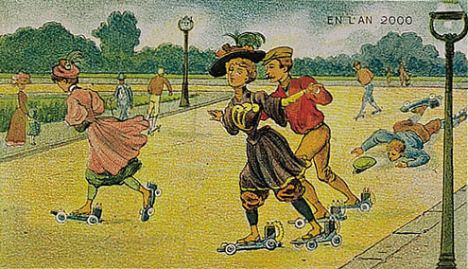
This image suggests that given the flexibility and democracy of individualized flight that there would be a need for something as pedestrian (sorry) as police in the sky. The idea of regulation and individual flight is much more interesting than the actual devices used to achieve flight.
Even though the firefighters are responding to a blaze in individual flight suits, the pumper delivering the water seems to be run by steam.
I wonder why the idea of robotized labor was used in construction--where the environment in which assembly cannot be controlled and in which each product would/could be different--rather than say in the construction of automobiles or washing machines or forks. It does however deliver a nice dream to the architect, who would (finally!) be in control of all aspects of the design and construction of his/her plan.
Image sources:
A number of these images were copeid from the PaleoFuture website, (here), which also publishes a number of other images expanding on the future-on-a-postcard theme (here).


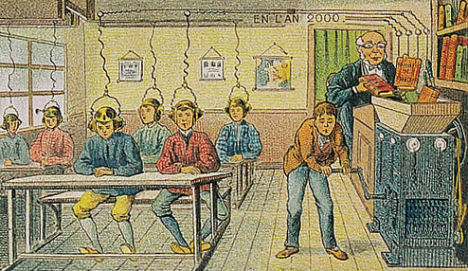

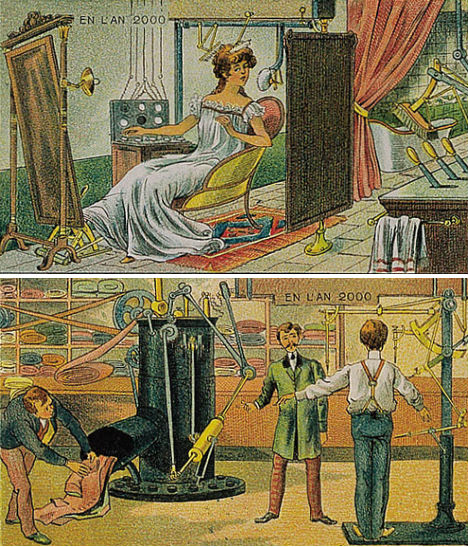
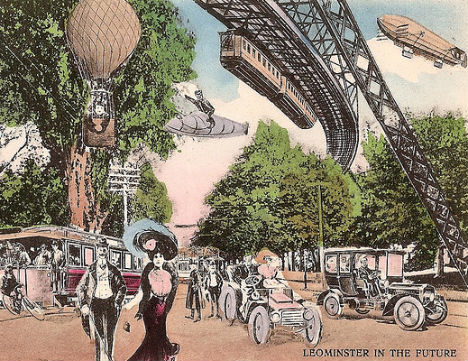


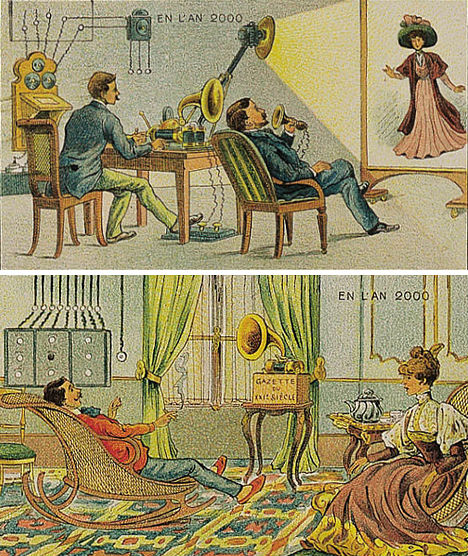
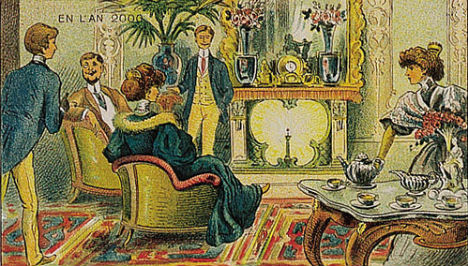
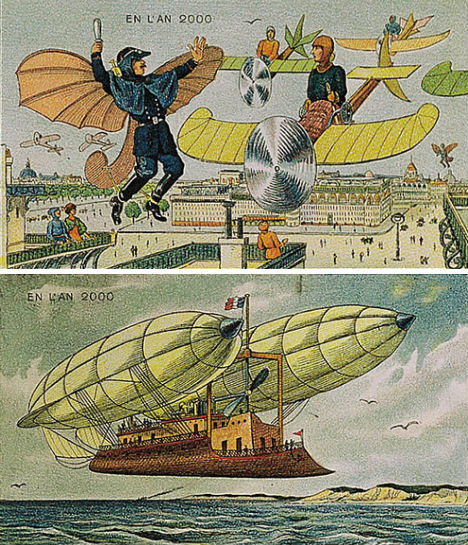
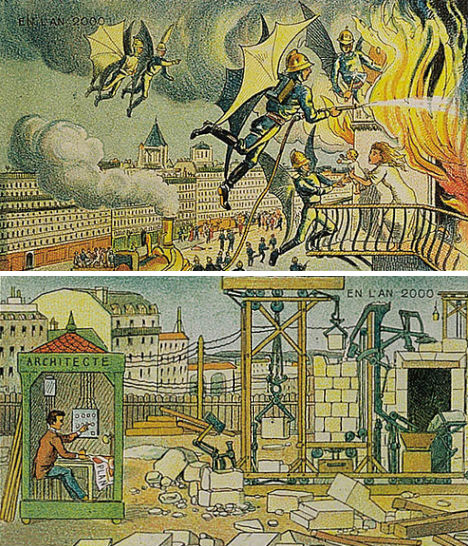

Comments